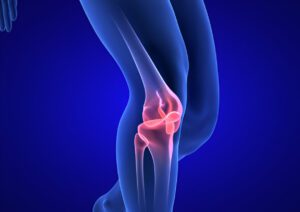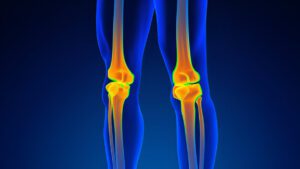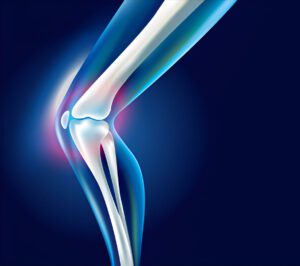Bouncing Back Stronger How to Return to Sports After Meniscus Repair
Whether you’re a weekend warrior or a professional athlete, a meniscus tear can feel like a massive roadblock. The meniscus, the C-shaped cartilage in your knee, plays a crucial role in cushioning and stabilizing the joint. When it tears, it’s not just about the physical pain; it also impacts your mobility and game performance. If you’ve found yourself sidelined due to this injury, you’re not alone. Understanding the path to recovery and how to return to sports safely can make the difference in your athletic future.
In this post, we’ll explore the ins and outs of meniscus tears, the surgical repair process, and what you can expect on the road to sports recovery. We’ll also share real-life success stories, expert advice, and tips for maintaining long-term knee health. Whether you’re a seasoned athlete, a sports enthusiast, or a physical therapist supporting clients, this guide will provide valuable insights to empower informed decisions for a safe return to sports.
Demystifying Meniscus Tears in Sports

Meniscus tears are among the most common knee injuries in sports, affecting athletes across various disciplines. This injury often occurs when athletes twist or rotate their knee with their foot planted, like in soccer, basketball, or skiing. The meniscus helps absorb shock and stabilize the knee, so when it’s torn, it can lead to pain, swelling, and restricted movement.
The severity of a meniscus tear can vary. Some tears may heal with conservative treatment such as rest, ice, and physical therapy. However, more severe cases might require surgical intervention. Understanding the impact of a meniscus tear on an athlete is crucial, as it affects not only the physical aspect but also the mental and emotional state of the individual. Knowing what lies ahead can help athletes prepare for the road to recovery and manage their expectations.
Meniscus Repair Surgery Essentials
When conservative methods aren’t enough to remedy a meniscus tear, surgery becomes a viable option. Meniscus repair surgery involves sewing the torn pieces back together, aiming to restore the knee’s structure and function. Several surgical techniques exist, including arthroscopic repair, which is minimally invasive and allows for quicker recovery than traditional surgery.
Recovery from meniscus repair surgery is a step-by-step process. Initially, the focus is on reducing swelling and pain. Gradually, athletes start physical therapy to regain strength and range of motion. However, recovery timelines can differ significantly from person to person. It’s essential for athletes to follow their surgeon’s recommendations and understand that patience is key to a successful comeback.
Returning to Sports After Meniscus Repair
Timeline for Return
After surgery, athletes are often eager to return to their sport. However, rushing the process can lead to setbacks. The timeline for returning to sports after meniscus repair varies based on several factors, such as the tear’s severity, the surgical technique used, and the individual’s commitment to rehabilitation. On average, athletes can expect a recovery period of three to six months before resuming their sports activities.
Rehabilitation Strategies
Rehabilitation plays a pivotal role in recovery. It focuses on restoring knee strength, flexibility, and stability. A well-structured rehab plan usually includes exercises to improve muscle strength around the knee, enhance balance and coordination, and increase cardiovascular fitness. Collaboration with a skilled physical therapist is crucial to tailor the rehabilitation program to the athlete’s needs and ensure a safe return to sports.
Common Challenges and Overcoming Them
Recovering from meniscus repair is not without its challenges. Athletes might face physical hurdles such as muscle weakness, stiffness, and discomfort. Mentally, the fear of re-injury can be daunting. Overcoming these challenges requires a combination of patience, persistence, and mental resilience. Setting realistic goals, celebrating small victories, and seeking support from fellow athletes or mental health professionals can contribute to a smoother recovery.
Triumph Through Real-Life Success Stories
Success stories of athletes who have returned to their sport after meniscus repair can be incredibly motivating. Consider the story of Sarah, a competitive soccer player who tore her meniscus during a crucial match. Through dedication to her rehabilitation and a positive mindset, she made a successful return to the field, even improving her performance thanks to her newfound focus on knee health.
Another inspiring example is Mike, a marathon runner who faced a meniscus tear mid-training season. By adhering to his surgeon’s advice and following a meticulous rehab program, Mike was able to complete a marathon just one year after his surgery, proving that a proactive approach to recovery can yield remarkable results.
Expert Advice from Physical Therapists and Surgeons

Gaining insights from experts can significantly enhance an athlete’s recovery journey. According to Dr. Emily Chen, an orthopedic surgeon specializing in sports injuries, “The key to a successful recovery lies in a strong partnership between the athlete, surgeon, and physical therapist. Open communication and adherence to the rehabilitation plan are vital.”
Physical therapist Jason Lee emphasizes the importance of gradual progression. “Athletes should focus on small, achievable milestones. Recovery is a marathon, not a sprint. Incorporating exercises that mimic sports-specific movements can help athletes regain confidence in their knee’s stability.”
Preventing Future Injuries for Long-term Knee Health
Maintaining knee health after a meniscus repair is crucial for preventing future injuries. Incorporating exercises that enhance muscle strength and flexibility can reduce the risk of re-injury. Balance and proprioception exercises help improve joint stability, reducing the likelihood of awkward movements that can lead to tears.
Additionally, athletes should prioritize proper warm-up and cool-down routines before and after physical activities. Wearing appropriate footwear and using protective gear can provide added support. Regular check-ins with healthcare professionals and addressing any discomfort promptly can further contribute to long-term knee health.
Taking Charge of Your Athletic Journey
Returning to sports after a meniscus repair may seem challenging, but armed with the right knowledge, strategies, and support, athletes can overcome obstacles and emerge stronger than before. By understanding the intricacies of the injury, committing to a comprehensive rehabilitation plan, and drawing inspiration from success stories, athletes can make informed decisions for a safe return to their passion.
Taking proactive steps to prevent future injuries and seeking guidance from experts ensures a sustainable athletic career. Whether you’re an athlete, sports enthusiast, or physical therapist, sharing your experiences and insights can create a supportive community that empowers others in their recovery journeys.

